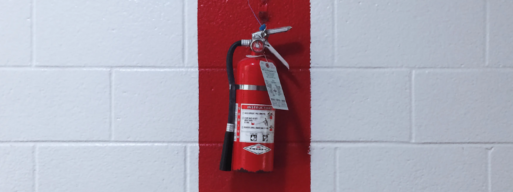Become a Pro at Operating Your Wood Fireplace Safely
A wood fireplace can provide many benefits to any home. It’s a sustainable type of fireplace that can burn even in power outages and increase your home’s value. Plus, it looks great, and provides a distinct aroma that makes any living room more appealing.
Compared to gas and electric fireplaces, wood fireplaces require a bit of maintenance. You’ll need to ensure that the fireplace is clean, and that the wood is kindled and burning properly. With that considered, knowing how to care for a wooden fireplace is vital for safety reasons.
Is a Wood Fireplace Safe?
A wood fireplace is only unsafe if the user does not know how to operate it correctly. Otherwise, with the right knowledge of wood fireplace maintenance, you’ll be equipped to use your wood fireplace effectively and safely.
8 Safety Tips for Maintaining a Wooden Fireplace
Make Sure There is a Safety Screen
A safety screen is an essential part of your fireplace. It creates a shield between the fire and the user, protecting the user in many ways. Not only that, but a safety screen can stop hot embers from entering the room. These screens are typically made out of metal mesh or glass. If your wood fireplace does not have a safety screen, or you suspect that the safety screen is not functioning properly, seek help from a fireplace professional immediately.
Teach Kids About Fireplace Safety
If you have children in your home, it’s crucial to teach them how to be safe around the fireplace.
Consider these child safety tips:
- Never leave a child unattended near the fireplace while it’s on
- Remove tripping hazards from the general vicinity of the fireplace
- Keep flammable objects away from the fireplace
- General fire safety is always important. Teach your kids about the importance of calling 911, and plan several escape routes in your own home.
READ MORE: Fireplace Safety Tips to Keep Your Fireplace Kid-Friendly
Don’t Use Fuel
It is extremely unsafe to pour any flammable liquid onto wood – that includes kerosene, gasoline, butane, or anything similarly flammable. This can lead to unmanageable fires or even explosions. Don’t fool yourself into thinking that you’ll be careful enough to do this safely. Even a minor spill can lead to a major catastrophe.
Instead, you must rely on tinder and kindling.
Only Burn Firewood
Not all types of wood are appropriate to burn in a wooden fireplace. Each type of firewood has its own properties that are relevant to efficiency, reliability, and safety. Oak, birch, ash and maple are often recommended as the most ideal types of firewood to burn in a fireplace.
Stay away from soft wood when burning a fire indoors. Any type of wood with “poison” in its name can release dangerous substances into the air. Driftwood is also a bad choice, as it contains chlorine, which is harmful when burned.
READ MORE: What Wood Makes the Best Firewood?
Close the Damper When Not in Use
Your fireplace is equipped with a damper that essentially acts like a door between your fireplace and chimney. It is important to pay special attention to the damper. It should be open when there is a fire burning, and closed when there is no fire burning – both of these instructions are crucial.
Keep the damper open until the embers are finished burning entirely. This will ensure that cold air from outside cannot enter your home. Then, close the damper to ensure that warm air doesn’t escape your house into the chimney, and that oxygen levels are not negatively affected.
READ MORE: Fireplace Venting, Explained
Install Carbon Monoxide Detectors
Whether you have a fireplace or not, having a carbon monoxide detector is critically important to your home’s safety. In fact, many areas require a functioning, up-to-date carbon monoxide detector by law.
Having a wood fireplace, though, should increase your concern about carbon monoxide. Buildup of carbon monoxide can cause headaches, dizziness, and nausea, and can lead to unconsciousness or even death. Appliances that burn wood have an air-to-gas ratio that must be properly maintained to avoid buildup of carbon monoxide. There are steps that should be taken to avoid buildup, such as closing the damper when appropriate, but installing a carbon monoxide monitor is the only way to ensure certain safety.
Don’t Leave a Fire Overnight
It is extremely dangerous to leave a fire burning overnight. Having a fire unattended for such a lengthy period of time increases the risk of carbon monoxide buildup. Plus, if any issues arise that need urgent care, no one will be there to tend to them. Make it a habit to always put out your fire before you go to bed.
Slow Burns are Key
Your instincts may tell you that a fire that burns quicker is better, but that’s not actually true. A fire that burns slowly will last longer, and will give you more heat without as many emissions. This makes slow-burned fires safer and better.
To do this, most experts recommend that you use wood that consists of 20% moisture content or less. Building from the top-down should create a slower fire, too.
Once you know how to safely operate your wood fireplace, you’ll be able to enjoy a crisp, warm fire in the living room without any fear or concern.

